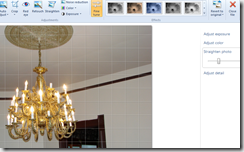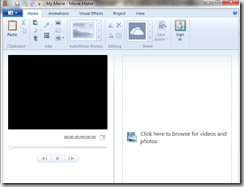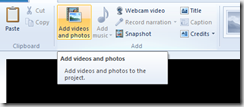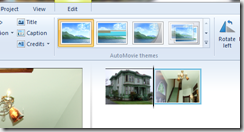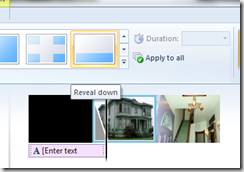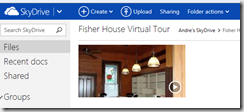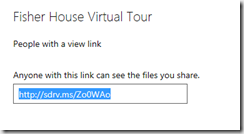It has been a while since I’ve blogged. Mainly that is due to having a significant role change. In the past year I’ve gone from a cog in the machinery to being the big cog. Dream job? In many ways yes. But the old adage of being careful what you wish for is always something to keep in mind. It might just happen and then you are on a heck of a rollercoaster ride. Now, that’s all I’m going to delve into that piece of history. The main idea behind this blog is about managing multiple projects, people and processes in a diverse and changing system. What is this, you ask? It’s like looking at technology from a distance and up close at the same time. Having a team of diverse and talented individuals who may or may not be in the right role. Keeping stake holders happy and projects on track. A typical day you say. Well if you’ve been there and done that, I would concur.

The future is out there. How you see it and perceive it can play tricks on your plans. Plan? Really, you mean you have to have a plan? How can you plan when you have conflicting projects? One plan is to not have a plan. Yes, I said it. No plan whatsoever. You just react to stuff as it comes up.
How, you might ask, is not having a plan having a plan? Plans are choices and by not choosing to pre-plan your projects you’ve made a choice. So if plans are choices and one was made…voila! A plan. Typically, this type of plan results in chaos. Now that may be fine for advanced mathematics but not really for a business. Not only that you leave yourself open to be blindsided, missed opportunities and generally letting things go to waste. Like not cleaning out the refrigerator, ever. Some of those mystery items in the fridge are truly scary. In business, scary things should be avoided. At least in my opinion.

The clock is ticking. Time is of the essence. Ugh! When does it stop? With luck, never. Perhaps never is too long but you get the meaning.
Now you might be wondering why I’m talking about no plan? Yes? Well, that is the environment I inherited. So, how do you turn it around from an unplanned reactive environment to one where plans are established and executed?
One thing I’ve seen in other environments is the tendency for the change agent to come in with the Great Plan and the attitude of “we’re going to set sail on a new direction, TODAY!”
Having an established plan is wonderful and you do need to have that vision. But it’s a “Vision” not a “Plan”. Why? All the existing employees are used to the old way. People don’t like big changes. Someone coming in with the Big Plan is going to meet a lot of resistance and eventually, the old habits win out. You also end up with grumpy staff!
So there you are with your great plan sitting on the drawing board. No amount of Rah Rah meetings are going to change that. 
Eventually you end up looking like…
with all your plans a mess and no traction.
So how does that change?
It depends a lot on your leadership, and the leadership of others. So, keep your vision but you’ve got to do some homework first.
Does that mean you can’t start out right away? Absolutely not.
The first task is to start getting rid of blockers. Perhaps a blocker is an individual. Maybe it’s a process.
Am I saying to “Fire ‘em All”?
No, but you may have to do that unpleasant task more than once. Again, homework!
Staffing changes is an option but before you even go down that route, you have to make sure you’ve identified and acquired the all tribal knowledge that is available.
You may find yourself in a situation where most of the tribal knowledge has already walked out the door. I know this situation first hand. You could have staff on hand that are making the motions but really have no idea how the whole system should even work. If that’s the case, after you’ve ascertained that “Elvis” has indeed left the building then it is time to fire that shot across the bow to let the team know you mean business.
Letting someone go is never easy and should never be done lightly. Homework and documentation. Let me say that again. Homework and documentation.
You have key decisions to make about the role that person occupies. Are you eliminating the role and reducing head count? Are you replacing the person and not the role? A couple of key questions (there are more…) but also you have to make sure that HR is involved with the process and it is done in a legal and professional manner. No kidding! Remember, HR always.
Ok, so maybe it’s a process you’ve got to fire. Huh? Trust me, some of your employees look at their processes as another individual. I mean, it’s like… “We can’t stop doing that! The company will fail if we stop doing that! “That” is the way its always been done. We can’t survive if we don’t do it!” You get it. Homework, again. If you run into this, and you will, you have to have a clear idea of what process or purpose the task fills. Things like repetitive functions that can be reduced to a single or automated step are my favorite.
Reports that go no where. Yes, these animals exist far more than you’d ever realize. I was at a company once where there were dozens of reports generated and sent to a file directory that nobody had read access to. Outside of IT, nobody knew the reports even existed. The staff who generated the reports spent two days every month creating these critical company reports. Critical? Yes, that’s what the department understood. Who knows, maybe it was a former executive who wanted them. Some of the reports were useful and they were kept. The irony was that the ones that took the longest had no current business use. Two days turned into fifteen minutes. Imagine that!

Now it’s time to build all the disparate parts into a functioning whole. The plan? I did start out this mess by talking about a plan… You have to make small turns of each gear that drives the company. Looking where you can remove a cog or, preferably, make the cog smaller so it turns faster. When you take a piece out in the middle of the line, make sure that the other process can move in to fill that gap. This is critical. If you don’t, you simply silo the processes and the dysfunction continues.
The hardest part in all this is having the patience to wait out the small changes. The importance of patience becomes more pronounced when your vision begins to take focus.
Making small changes to address the future vision is an Agile way of looking at business. See, the concept doesn’t just apply to programming. It’s all a series of processes that have to work together to make a whole system.
You can’t be afraid of making the difficult choices, sometimes they are all you have. Typically, if it is difficult the impact is much greater. More when it’s a person choice than a process. Keep in mind though that a process choice may directly affect a person in an unforeseen manner. Isn’t that just a kicker? You get rid of a process making some employees life easier and they quit because you took their process away. Hogwash you say? Unfortunately, I’ve seen it first hand.
So:
Set the vision – you need to know where you are going
Make a general plan – to many details ensure the plan will break. The more detailed, the sooner it breaks!
Increment the change – small changes are easier for the whole to digest. Break up big changes into small parts.
Wait the change – you have to give the change you made time to be adapted to. To many small changes too fast can even be worse than a big change.
Revisit the plan and adjust – Once change has started, new things will come to light that were either not known (a real surprise), the change introduced a new situation (surprising but not a shocker) or you’ve some more time to do some more homework and can better tune the plan (I like this one).

















